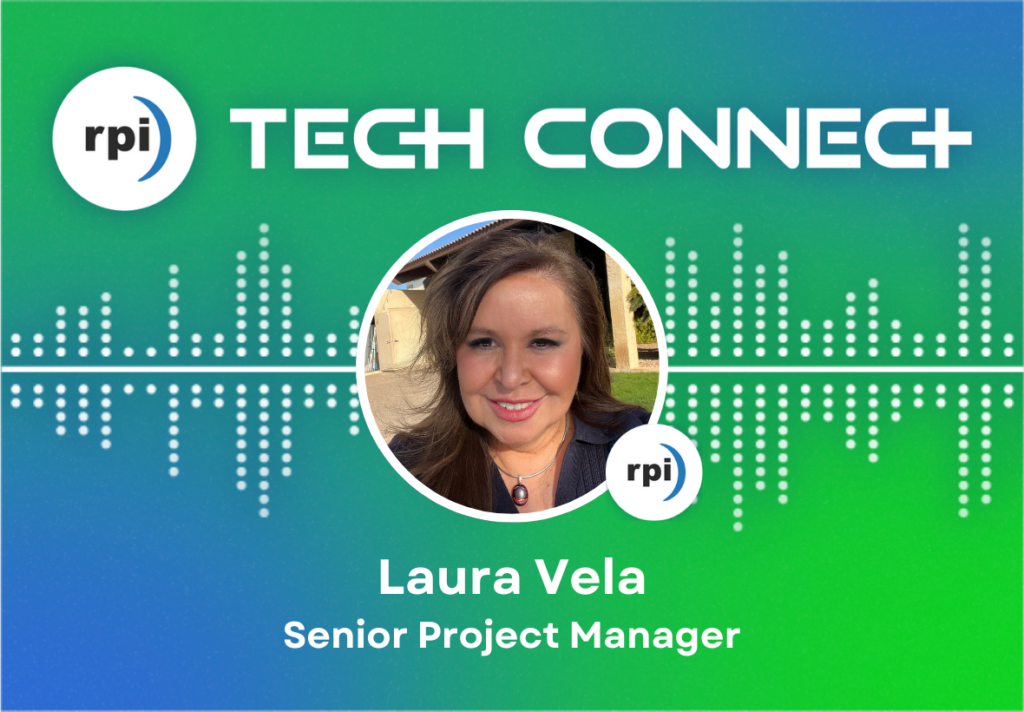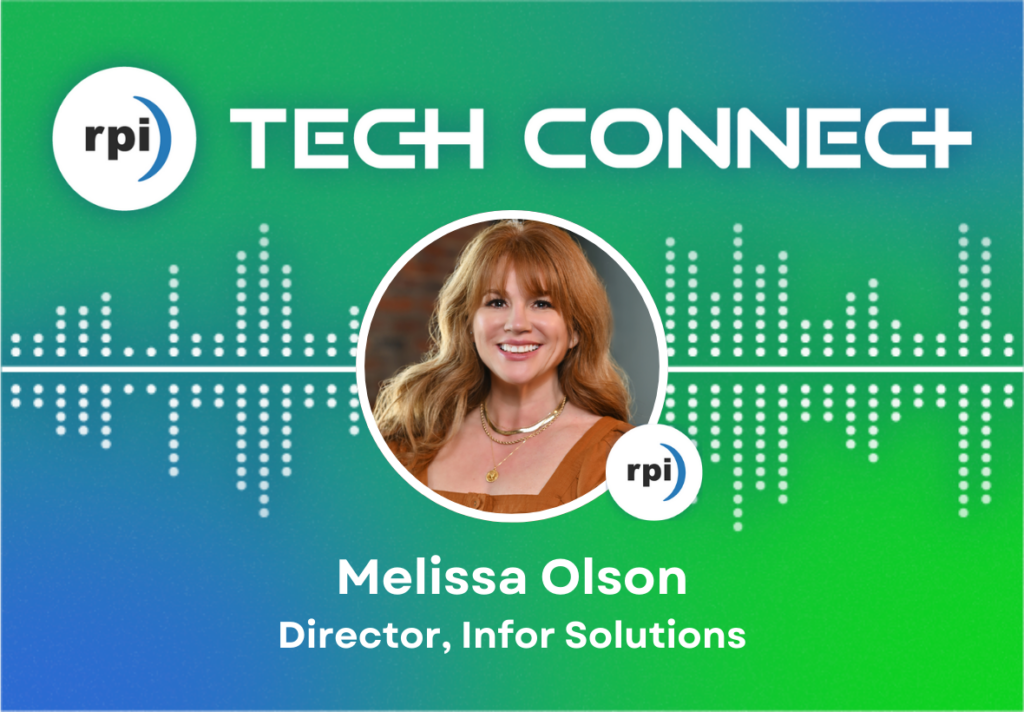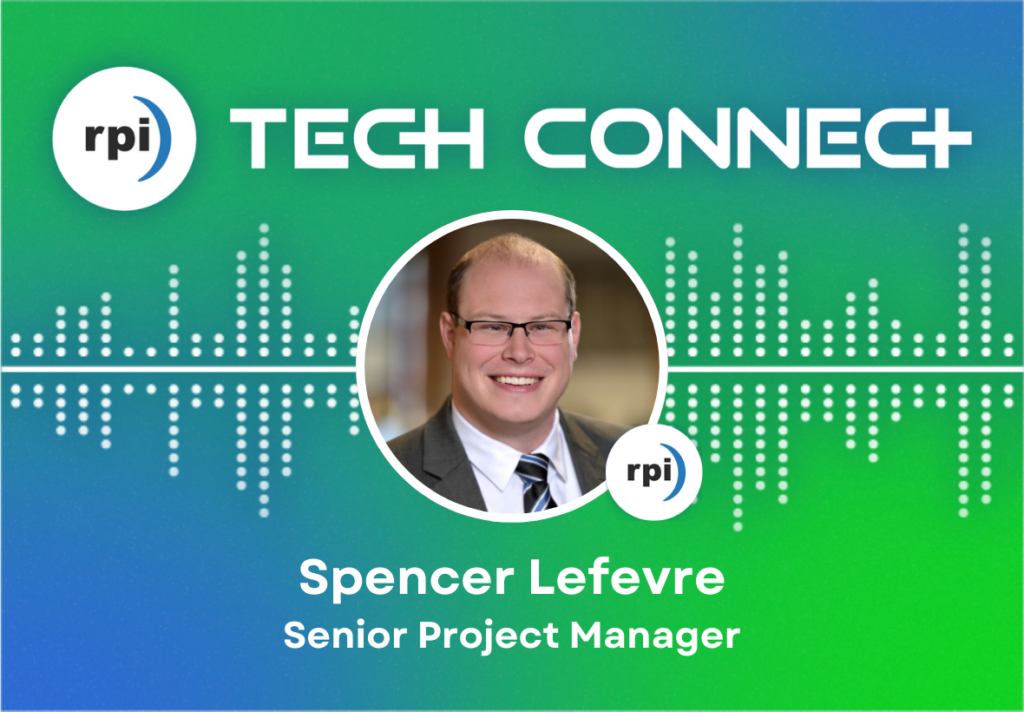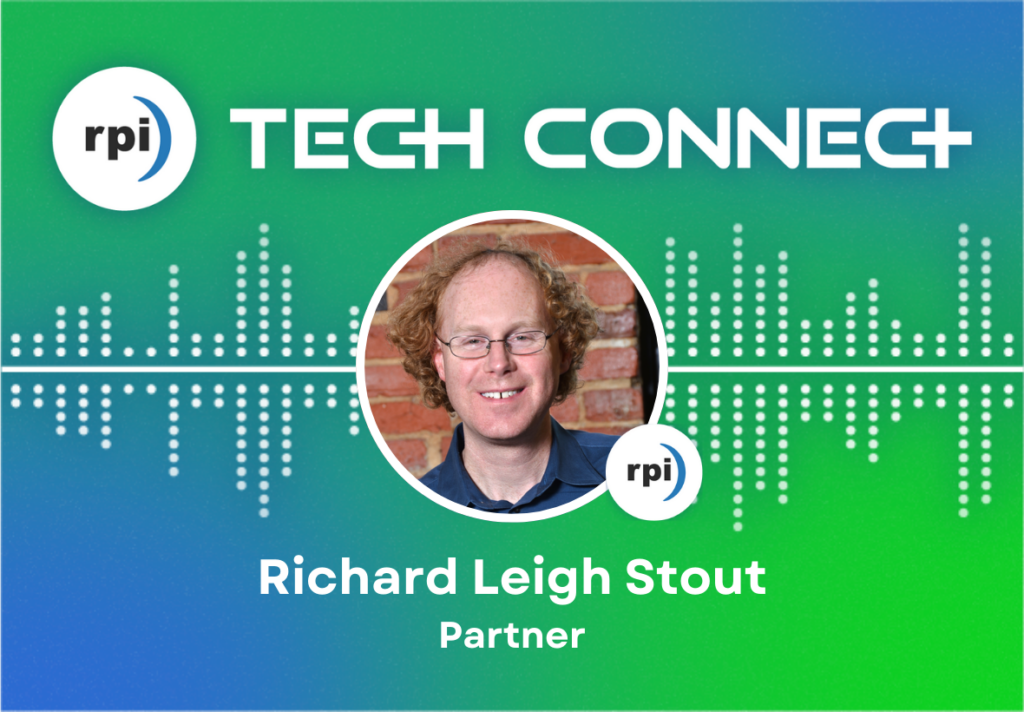Before you sign the contract or assign resources, there’s one thing every ERP project needs, a healthy dosage of due diligence. In this episode of RPI Tech Connect, we sit down with Senior Project Manager Laura Vela to break down the most common missteps organizations make when kicking off ERP initiatives, as well as five key steps on how to avoid them.
From misunderstood functionality to gaps in vendor scope, Laura walks us through key areas to get right from day one: contracting, governance, resource planning, vendor management, and budget protocols.
Tune in to hear real-world success stories and leave with practical steps you can take today to set future projects up for success.
Interested in listening to this episode on another streaming platform? Check out our directories or watch the YouTube video below.
Meet Today’s Guest, Laura Vela
Laura Vela is a management consultant with over 30 years of experience working with ERP systems planning, selection, business process improvement, implementation and post-live support. She began her career in consulting after completing her MBA at Arizona State University.
In her current role as Senior Project Manager at RPI, Ms. Vela provides Project Management for Infor CloudSuite Implementations. She expertly guides clients through achieving leading practices and incorporates organizational change management structure to ensure maximum benefit from the ERP system. Laura has led ERP implementations for both Cloud and on-premise solutions across healthcare, public sector and distribution industries.
She specializes in large scale ERP implementations and transformation programs and has extensive experience integrating ERP systems with numerous other systems, including PeopleSoft, API, Kronos, Premier, McKesson, Cerner, Epic, and Hyperion.
Meet Your Host, Chris Arey
Chris Arey is a B2B marketing professional with nearly a decade of experience working in content creation, copywriting, SEO, website architecture, corporate branding, and social media. Beginning his career as an analyst before making a lateral move into marketing, he combines analytical thinking with creative flair—two fundamental qualities required in marketing.
With a Bachelor’s degree in English and certifications from the Digital Marketing Institute and HubSpot, Chris has spearheaded impactful content marketing initiatives, participated in corporate re-branding efforts, and collaborated with celebrity influencers. He has also worked with award-winning PR professionals to create unique, compelling campaigns that drove brand recognition and revenue growth for his previous employers.
Chris’ versatility is highlighted by his experience working across different industries, including HR, Tech, SaaS, and Consulting.
About RPI Tech Connect
RPI Tech Connect is the go-to podcast for catching up on the dynamic world of Enterprise Resource Planning (ERP). Join us as we discuss the future of ERPs, covering everything from best practices and organizational change to seamless cloud migration and optimizing applications. Plus, we’ll share predictions and insights of what to expect in the future world of ERPs.
RPI Tech Connect delivers relevant, valuable information in a digestible format. Through candid, genuine conversations and stories from the world of consulting, we aim to provide actionable steps to help you elevate your organization’s ERP. Whether you’re a seasoned professional or new to the ERP scene, our podcast ensures you’re well-equipped for success.
Tune in as we explore tips and tricks in the field of ERP consulting each week and subscribe to RPI Tech Connect below.
Transcript
Chris Arey
Considering an ERP project? That’s fantastic. Before you get started though, it’s important to complete a few key due diligence tasks. Taking the time upfront will set you up for greater project success down the road.
Hello and welcome to RPI Tech Connect. I’m your host, Chris Arey. Today, we’re diving into a critical topic for anyone planning an ERP project—the concept of due diligence. Starting your project off on the right foot is crucial for success, and what better way to do so than to spend some time upfront getting your ducks in a row?
Joining me today to talk about all of this is Laura Vela, Senior Project Manager at RPI. She’s worked on countless projects helping businesses get the most out of their ERP investments.
Laura, welcome to the program.
Laura Vela
Thank you, Chris. It’s my pleasure to be here.
Chris Arey
Awesome. Is there anything else you want to share about yourself before we jump in?
Laura Vela
Just some general background, I’ve been working in the ERP space for almost 30 years. I’ve done a lot of different types of ERP projects from planning and selection to full-life implementations. I’ve helped clients stand up a support team. I have a whole lot of experience that I’m anxious to share with the group today.
Chris Arey
I love to hear it. I think a great place to start today would be to talk about some big-picture items here. In your experience, what are some of the most common challenges that organizations face when they’re starting an ERP project?
Laura Vela
That is a really solid question. The planning at the beginning of the project sets the tone and precedents for how the project will mature throughout the life cycle.
What I’ve seen are issues in five major categories:
- Not enough due diligence around contracting: not getting down to the nitty-gritty of what was purchased from a software perspective versus services.
- Project governance: standing up firm decision-making and issue escalation protocols from the very beginning.
- Resource planning: overestimating what internal teams can do without backfilling or getting the right talent on board.
- Vendor relationship management: making sure multiple vendors are working together on the client’s behalf.
- Budget protocols: having a clear understanding with vendors about what’s in scope, what’s not, and how out-of-scope items will be handled.
Chris Arey
Okay, thank you. I like how clear that was. It sounds like when businesses embark on these journeys, they really need to understand what it is they’re buying and what they’re getting. Because without that, issues can stem in all sorts of directions. Would you agree?
Laura Vela
Absolutely. And may I just dive into that a little bit more?
This really speaks to the due diligence necessary for contracting. In addition to making sure there’s a good match between the software that was purchased and the services to implement it, there’s also the need to understand the requirements and the functionality the client needs.
What a client might describe as “we need this risk management application because we want proper segregation of duties” could already be handled through the vendor’s standard audit reports. But in the client’s mind, they need a separate risk application. You need experienced professionals to help interpret the actual requirement, assess how the software will meet that requirement, and then ensure the implementation services reflect that.
Chris Arey
Got it. I really love that you used the word “interpret”.
As you were talking through that, I was thinking, it really is about understanding what the client is saying, what the requirement actually is, and what the software provides. It can be a whole cryptic language sometimes depending on the perspective. That was a great way to put it.
Laura Vela
Absolutely and you’re right, it can be hieroglyphics at times.
Chris Arey
So that’s the contracting due diligence portion. What about this concept of project governance? What does that look like?
Laura Vela
You know, it sounds simple—project governance. Of course, you have a PM, and off you go to the races. If only it were that easy.
We’ve seen a lot of clients skip the critical step of setting up a strong project charter. That charter really should become a Bible of sorts. It’s the roadmap for the full implementation of the project. It defines what’s in scope from a software perspective, timelines, governance structure, and decision-making authority.
It outlines how risks, assumptions, issues, and decisions are maintained. How things escalate. What meetings look like. Who meets when? All of that should be documented.
Chris Arey
So you mentioned this charter acting as the Bible of the project. What does the process look like for putting that together?
Laura Vela
When you engage with an experienced partner, they’ll always have a boilerplate charter to start with. But that has to be customized for each client. You have to meet clients where they are. Some have simple organizational structures, others have five levels of approval. You break that down.
The charter should state how much time is expected from executive sponsors, steering committees, team leads, etc., and what stages require more involvement. Responsible, accountable—the full RACI model—that all belongs in there.
Chris Arey
I really like that you emphasized documentation. If it’s not written down, it didn’t happen. At any point, you can refer back to that document and say, “Here’s what we agreed on.” That prevents surprises.
Laura Vela
Exactly. These projects often run for a year or more. I can’t even remember what I had for dinner last night—so documentation is essential.
Chris Arey
Haha, love that. Okay, let’s talk about resource planning. What does that process typically look like?
Laura Vela
This one is tough. Clients sometimes overestimate what their team can realistically do, especially when trying to avoid costs.
Take an AP Manager, for instance. The organization expects them to maintain daily responsibilities and still participate in a massive ERP project. That’s rarely sustainable.
And ERP projects usually have a compelling reason—automation, centralization, mergers. So you need active, committed involvement from the start.
Chris Arey
Right, and sometimes clients hesitate to backfill, thinking their veteran team members can’t be replaced.
Laura Vela
Exactly — but you don’t need to replace 100%. Maybe 20% of the work can be offloaded to a temp or reallocated creatively. Also, clients should be cautious about TBDs from implementation partners. A TBD on a critical resource is a red flag. You want a solid, committed team from day one.
Chris Arey
So it’s about getting clients to think ahead about staffing and resource allocation—for both the implementation and their day-to-day work.
Laura Vela
Yes, very well said.
Chris Arey
And I know that’s something that RPI helps with too—backfilling. I had another project manager on the show who once said that sometimes the internal team is excited to work on the project, but when it gets closer, they shift and want to stay in their current roles.
Have you seen situations where the ERP partner ends up doing more of the implementation while the internal team sticks to their day-to-day?
Laura Vela
Yes, I’ve seen that. I don’t recommend that model, though.
An implementation partner is there to help prepare the client to own the system. Without active participation, the client is at a major disadvantage when it’s time to take over. They also need to own the design decisions. No consultant can know the nuances of a client’s business as well as they do.
Now of course, part of our job is helping clients evaluate their current state and map a future state based on leading practices. But the client must have skin in the game—even if it’s just 20-25%. There are key milestones that require strong internal resource participation.
Chris Arey
Got it. That makes total sense. Because when clients are engaged early, user adoption and enthusiasm go way up. You build that momentum—instead of showing up at Go-Live and saying, “Surprise! This is your new system!”
Laura Vela
Exactly. Let’s forget excitement for a moment—let’s talk acceptance.
You don’t want to get to Go-Live and hear, “I never signed off on this.” And yes, I’ve seen that. So yes, excitement is great—but acceptance is critical.
Chris Arey
Haha, got it.
Okay, so the next area is vendor relationship management. There are so many players in an ERP project. What do you recommend there?
Laura Vela
Hypnosis.
Chris Arey
I like that. Let’s lead with that. Move on—next topic.
Laura Vela
Haha, right? Just hypnotize them all.
But seriously, communication is everything. In these long ERP projects, things shift—timelines move, and dates get pushed. You might have a smaller vendor involved in printing or an add-on solution who’s juggling 10 other clients. If they’re not kept in the loop, it creates chaos.
They don’t need to attend every meeting, but they should receive status reports, be aware of changes, and have clear expectations.
Also, if a vendor provides both software and services, and there’s overlap with the implementation partner, be candid about responsibilities. I’ve seen vendors go directly to the client behind the partner’s back, offering additional services—and that’s never a good look.
At the end of the day, the client, implementation partner, and third-party vendors are all on the same team. Openness and collaboration are critical.
Chris Arey
Yeah. Collaboration and open communication—that’s just a winning recipe. No secrets, no surprises.
Laura Vela
That’s right. Do your diligence, be transparent, and you’ll be able to sleep at night knowing you did your part to make it successful.
Chris Arey
Exactly. Okay, our last big-ticket item here is budget. It can be a short topic—but never an unimportant one. What can you share there?
Laura Vela
Budget is tricky—but it becomes less of an issue when you’ve built and followed a strong project charter.
If your charter is loose or incomplete, budget issues are almost guaranteed to pop up.
It doesn’t matter if you’re using time and materials or fixed fee—you need to clearly define scope and expectations upfront. How do you measure success? What are the overarching goals?
And when things tilt off course—not necessarily sideways, but just tilt—how are those changes managed and documented?
Sometimes you discover new needs during the project—like a customization or new application. Maybe it’s essential to how the client does business. Sometimes it’s possible to pull back from the complexity, but other times it’s not. The key is to document those changes and tell the story of why the scope or budget is being adjusted.
Chris Arey
Yeah, so if you understand those goals and desired outcomes early, then it helps justify the resources and budget you need as you move forward.
Laura Vela
Absolutely.
And this also ties into cutover planning. If you’re close to Go-Live but one area isn’t quite ready, you can evaluate: can we go live with 99.9% and hold the “cherry on top” for later?
Sometimes deferring a small area saves the overall timeline—and that can save a lot of money. Again, it comes back to defining those priorities and making strategic decisions.
Chris Arey
Yeah. You sound like a great project manager. I want you on all my projects. You make it sound fun.
Laura Vela
I’ve heard that before.
Chris Arey
Well, that’s fantastic. I really appreciate you exploring all those areas with me today. You’ve worked on countless ERP projects over—you said—30 years, right?
Laura Vela
I know. And I still look like a babe in the woods.
Chris Arey
Haha, you know what you’re doing. I’ve got to ask—has your process changed over the years?
Laura Vela
In some ways yes, in others, no.
When I started, cloud-hosted solutions weren’t a thing everything was on-premise. That brought its own complexities. If you had told me 30 years ago people would host their systems externally and give up control over patches and updates, I’d have said “no way.”
The cloud has changed things. Now you have to plan around release cycles and time your testing accordingly. And that impacts resourcing too. If a client is moving to the cloud, are they repurposing their technical team? Are people scared about their roles post-go-live?
That’s where the change management component comes in. It’s more important now than ever.
Chris Arey
Yeah, ERP projects are technical, but they’re also people projects. You can configure everything perfectly, but if users aren’t ready to embrace it, the whole thing can fall flat.
Laura Vela
You’re exactly right.
I’ve seen projects delayed at the finish line because users weren’t ready. Not because the system wasn’t — but because people didn’t feel heard, didn’t feel prepared. The implementation partner—in this case a former employer, not RPI was so focused on the timeline that the people aspect was neglected.
I’m ProSci-certified in organizational change management, even though I focus on overall project management. And I strongly believe in the people component. It needs a thoughtful, structured plan like the one RPI offers.
That way, stakeholders are heard, engaged, and empowered to decide: are we ready for the next milestone? Or do we need to adjust?
Chris Arey
Yes, so well said. Thank you for sharing that.
Okay, we’re getting close to time. Before we wrap up, I always like to ask: if you could leave the audience with one actionable takeaway, what would it be?
Laura Vela
Ask for help.
There are professionals like myself and many others at RPI this is what we do. We can help prevent you from making common mistakes. So don’t be afraid to reach out. We’re happy to talk, give advice, and help you start in the right direction.
Chris Arey
That’s fantastic. It’s advice we hear often but sometimes we all need a reminder. Don’t be afraid to ask for a helping hand. You can save yourself a lot of time and frustration that way.
Laura Vela
That’s what I’ve learned in my life.
Chris Arey
Well thank you so much, Laura. I appreciate you sharing these great tips with us today.
For those of you listening in, thanks for hanging out with us. If you have questions about today’s discussion or want to learn more about due diligence best practices, we encourage you to reach out. You can do so by emailing us at podcast@rpic.com.
This is RPI Tech Connect and we’ll see you next time. Take care.




